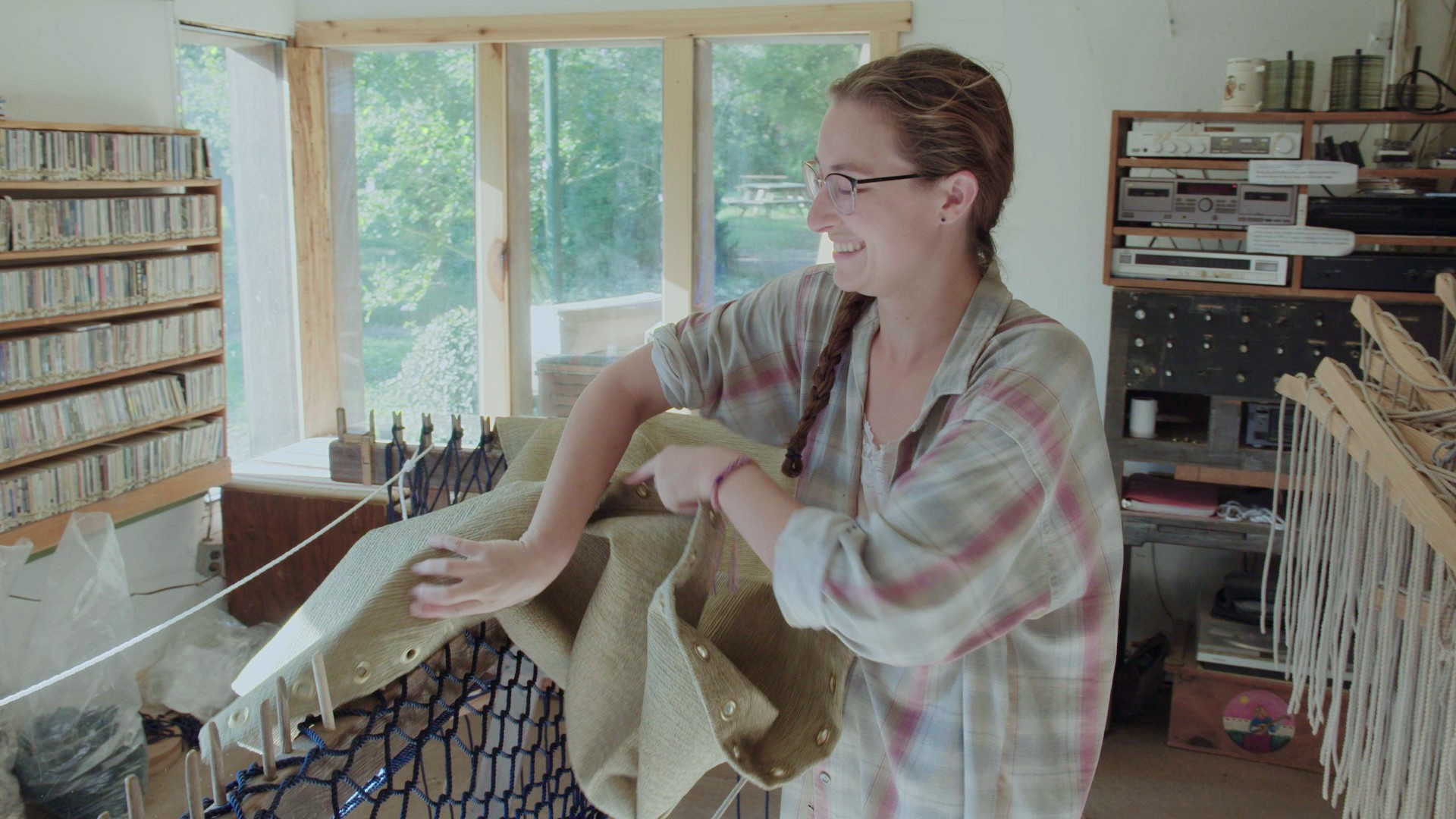This story appears in VICE Magazine's Power and Privilege Issue. Click HERE to subscribe.There’s this concept in economics called “agglomeration effect,” which is about the importance of being close to the action. This can mean snagging the desk physically nearest the boss, but also, say, sharing public-transit with others in your profession. The theory goes that spontaneous interactions—over drinks, coffee, social events—allow ideas to proliferate and expand like viruses. This is why, despite the technology available to afford virtual offices, tech bosses still like having boots on the Silicon Valley ground. You never know what your employees will hear at the bar. The weather’s nice, the natural wonders dynamic, and, if you’re in tech, you’re likely to be among your own.
Advertisement
But something bigger is happening out here. You can almost feel it in the air. Now and then, it sounds like mere whispers floating in the fog about the lone affordable apartment left in the Bay.Something’s about to burst, and it might just be society itself.

Picture: the estuary-rich region of the greater Bay Area. Now picture: an enormous sewage pipe hovering above, dumping a steady stream of gelatinous green goo. This is the world’s capital investment, lured into the area by the profitability of tech.While the first dot-com bubble burst around the new millennium, investment still hung around, eventually glomming onto the social networks and so-called disruption that was happening here. There was money to be made, after all, in global advertising, and by taking advantage of legislators who didn’t know when new markets were whipped up under their noses by web applications like Airbnb and Uber. Money chased money, the spigot kept flowing.It often seemed like there were no real regulations when it came to tech, particularly in the Bay. It was capitalism run amok, a borderless and lawless Wild West not witnessed since the Gold Rush. And when the dust ultimately settled in the battle for sustained growth, a quartet of conglomerates stood above the rest.While Amazon made its (first) home in Seattle, Facebook, Microsoft, Alphabet (née Google), and Apple—the first company with a market valuation of over $1 trillion—chose the Bay. They swallowed up competitors and poached top talent, and this shifted the culture of the startup world. No longer was it small, independent companies creating their own ideas, but small, independent companies coming up with stuff to sell the big guys.

Picture: the estuary-rich region of the greater Bay Area. Now picture: an enormous sewage pipe hovering above, dumping a steady stream of gelatinous green goo. This is the world’s capital investment, lured into the area by the profitability of tech.While the first dot-com bubble burst around the new millennium, investment still hung around, eventually glomming onto the social networks and so-called disruption that was happening here. There was money to be made, after all, in global advertising, and by taking advantage of legislators who didn’t know when new markets were whipped up under their noses by web applications like Airbnb and Uber. Money chased money, the spigot kept flowing.It often seemed like there were no real regulations when it came to tech, particularly in the Bay. It was capitalism run amok, a borderless and lawless Wild West not witnessed since the Gold Rush. And when the dust ultimately settled in the battle for sustained growth, a quartet of conglomerates stood above the rest.While Amazon made its (first) home in Seattle, Facebook, Microsoft, Alphabet (née Google), and Apple—the first company with a market valuation of over $1 trillion—chose the Bay. They swallowed up competitors and poached top talent, and this shifted the culture of the startup world. No longer was it small, independent companies creating their own ideas, but small, independent companies coming up with stuff to sell the big guys.
Advertisement
"I’m seeing a concentration of control and power in tech, where there’s less competitors in particular niches of the industry,” said Arthur Corona, 30, a support team manager for the cloud-based domain registrar Gandi.net who’s worked in the area, and in tech, his whole life. “I’m really worried about that, because that comes at a cost of security and data,” he added, mentioning the lack of penalties following the Equifax breach, and Congress’s feckless questioning of Mark Zuckerberg after the Cambridge Analytica scandal. “There are people making laws for us, and they don’t even know how internet ten years ago even works. It’s like showing up to a modern battle on horseback.”This troubles workers like Corona because they need lawmakers to look out for them. We’re now nearing the end of that gold-rush cycle, when lone miners with pickaxes and pans are getting replaced by corporate syndicates plundering with machines and a low-paid workforce. Both are coming for the tech oligopoly.
In 2017, 22,949 new graduates from coding bootcamps in the US and Canada were expected to enter the workforce, an increase from 15,077 in 2016. The market dynamics of this influx seemed fairly clear: a race to the bottom for workers, as employers were able to choose from an increasingly large pool. And the pool wasn’t exactly bound by national borders, meaning employers could choose workers who are least-protected by minimum-wage laws, work-hour requirements, or the ability to unionize. (One example of how this might look further in the future came early in 2018, when the tech company Lanetix was accused of responding to its engineering force’s unionization by firing them all and outsourcing their jobs to Europe.)
Advertisement
The day-to-day lifestyle for tech workers is poised to follow the current trajectory of all others—they’ll go from filling out a single W-2 to partaking in the 1099 deluge that accompanies much of modern earning. According to the economists Alan Krueger and Lawrence Katz, 94 percent of new jobs created between 2005 and 2015 amounted to “alternative work arrangements,” which is to say many were freelancers and contractors, as opposed to full-time employees. This pattern was expected to continue and, according to another analysis, could result in more than half the workforce becoming freelancers (of some sort or other) by 2027.But tech work may get there even sooner, as technology and lack of physical demands allow, and thus incentivize, bosses to scour the globe for the cheapest, most atomized workers. More and more people may get to experience the “freedom” of freelancing, which is mostly just freedom from consistent income, healthcare, or job security. That is, unless all of these jobs, too, are lost to the machines. Because ultimately, the goal isn’t lowering worker pay or trimming protections—that’s the inevitable side effect of unrestrained capitalism, but it’s also amateur stuff. The real money is in eliminating the workers entirely.An article published in January 2018 in MIT Technology Review argued, “There probably isn’t a more sought-after skill set in the world of technology” than that of an artificial-intelligence engineer. As ever, there’s profitability in using robots instead of humans. (To recap, robots don’t have rights, and can’t strike.) While most analyses in mainstream American media in recent years have centered on automated cars and manufacturing, robots are coming for coders, too. When, in 2014, Pew asked 1,896 experts what the future of automation might lead to, nearly half envisioned a future where robots displaced blue- and white-collar workers, leading “to vast increases in income inequality, masses of people who are effectively unemployable, and breakdowns in the social order.”
Advertisement
Eventually, in other words, the only tech workers left may be a relative handful of rich folks.“The favored workers will do well, like sports stars, but the guys in the minor leagues—meaning the rest of the workforce, the coders, the delivery people—they won’t,” said Richard Walker, a professor emeritus of geography at University of California, Berkeley, and the author of Pictures of a Gone City: Tech and the Dark Side of Prosperity in the San Francisco Bay Area.Which is to say these coders of AI may make robots to kill everyone else’s jobs—and then be compelled to produce a robot that kills their own too.Of course, there’s money here for now, and so here is where workers will continue to flow, at least for a while. The more immediate problem is that thanks to decades of underdevelopment and policies that favored landowners, there’s nowhere to put anyone.Not that there isn’t any housing or development going up. Some of these new units are used by their owners, but many are second homes, or rented out on Airbnb, or simply kept vacant as “safe deposit boxes in the sky,” as the real estate appraiser Jonathan J. Miller told the New York Times way back in 2013. How many of these luxury apartments are empty? It’s impossible to know for sure. A 2014 study by SPUR found that roughly 30,000 units in San Francisco were vacant at least part of the year. Meanwhile, a 2017 count of the city’s homeless population came in at 7,499, while across the Bay in Alameda County, it was 5,629."More and more people may get to experience the 'freedom' of freelancing, which is mostly just freedom from consistent income, healthcare, or job security. That is, unless all of these jobs, too, are lost to the machines."
Advertisement
This is where late capitalism’s rotten core is perhaps most clearly exposed.In early 2018, Leilani Farha, a special rapporteur on housing for the UN, visited Oakland’s homeless encampments. She concluded that the conditions were as bad as she’d seen in Mexico City, Manila, and Jakarta. “There’s a cruelty here,” she told the Guardian. “It’s structural.” A year earlier, a story in the San Francisco Chronicle profiled Etoria Cheeks, a public high school math teacher who couldn’t afford rent, so she bounced around downtown hostels and homeless shelters. “San Francisco isn’t geared for me,” she said.So even if you earn a fine-enough living to rent a place in the tech metropolis at the center of the near American future, who will teach your kids? Who will cook the food you eat at restaurants, haul away your block’s trash? Who will make the art and music you consume besides a handful of rich celebrities?“You [might hear] stories about people commuting from over the mountains or Stockton, spending two and a half hours in a car to get to work,” said Jay Shambaugh, the director of the Hamilton Project, an economic research group at the Brookings Institution. “It doesn’t feel sustainable. If you don’t need to be located in San Francisco, why would you, given the high cost of living?”The city of San Francisco, and the entirety of the Bay, is heading for a breaking point. Empty skyscrapers. Streets filled with tents. Homes populated only by the homogeneous blob of techies. This can’t last—and it’s not just a California thing, either.
Advertisement
“The issue with the wealthy is their desire to be with others like themselves, to congregate and assemble in defensible places where they feel safe, where they can spend their money as lavishly as they can without being confronted with what their wealth means,” argued Richard Wolff, a Marxist economist based in New York. “They’re building networks of enclaves that everybody knows about, with densely populated cores and surrounding gated communities, and special golf courses and accesses to airports that fly them in and out. They’re creating the very dichotomy that will, in the end, blow the place up.”
Wolff mentioned the Bay’s notorious protests against the buses that pick up techies and drive them to the office parks down in Silicon Valley. Residents have not historically liked this. If you’re part of our community, why can’t you use our transit? You’re flooding our housing, and now you’re flooding our streets? Some of the buses were blockaded, others had their tires slashed, their windows broken.“These are harbingers of a system that can’t hold itself together,” Wolff said."It is easier to imagine the end of the world than the end of capitalism.” The assertion popularized by the Marxist theorist Fredric Jameson about the modern world has long seemed infallible. But after people get their fill of free office snacks in the years to come, they’ll enjoy a front-row seat to the system fraying at its seams. If this is what the end of capitalism looks like, though, no one’s sure what comes next."The city of San Francisco, and the entirety of the Bay, is heading for a breaking point. Empty skyscrapers. Streets filled with tents. Homes populated only by the homogeneous blob of techies. This can’t last—and it’s not just a California thing, either."
Advertisement
Peter Frase tried to figure it out in his book Four Futures: Life After Capitalism. He settled on communism, rentism, socialism, or exterminism*. The first three are variations on themes most of us know, while the last is essentially the rich hoarding goods and the rest of us fighting over scraps. It’s not hard to see the opening rumbles of that vision now, in 2018, right here in the Bay.“San Francisco is an example of capitalism that has become unhinged,” Walker said. “The levels of inequality are so extreme. The tech moguls of today are, in fact, quite like the Robber Barons in their immense wealth, monopoly power, and mythological status—not to mention the unlimited support they’ve had from government at all levels until very recently.”I asked Chris Carlsson, a writer and San Francisco historian, if the end of capitalism would start in the Bay. He scoffed at that notion as an impossible one to discern, but when I asked him what he thought the city might look like in five or ten years, things got more interesting.“Rubble,” he said. “The big earthquake, that’s for sure coming. And there will definitely be dire weather changes.” He mentioned how recent projections of global-warming effects predicted that Mission Bay, the Embarcadero, and both of the area airports would be under water. “Oh, and there’s a very strong chance of war,” he said.I asked him if he’d ever leave, ahead of the chaos.“No, I’m here,” he said. “I live in a nice apartment for very cheap.”*Correction 10/15/2018: A previous version of this story listed "extremism" as one of the Four Futures, rather than "exterminism." We regret the error.Sign up for our newsletter to get the best of VICE delivered to your inbox daily.Follow Rick Paulas on Twitter.

